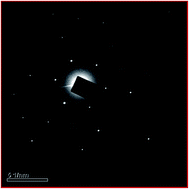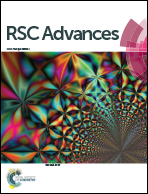Effect of graphene content on the properties of poly(lactic acid) nanocomposites
Abstract
In the current work, the influence of temperature on the exfoliation of expandable graphite (EG) and its structural properties were investigated in detail. The EG exfoliated at 750 °C was subjected to sonication and further used as reinforcement material in the poly(lactic acid) (PLA) matrix to investigate the influence of “graphene” (GR) on the structural, morphological, thermal, optical, mechanical and oxygen barrier properties of PLA composites. X-ray diffraction results disclose the effect of sonication time on the dispersion ability of GR in the PLA matrix. A high resolution transmission electron microscopy image of GR demonstrates a monolayer structure of GR. Thermo-gravimetric analysis reveals that the Tonset value for the PLA composite with 0.5 wt% GR content increases by 6 °C over neat PLA, when 10% weight loss is taken as a point of comparison. The increase in the thermal stability of PLA composites is also verified by an increase of activation energy (Ea) value evaluated by the Coats–Redfern method. Differential scanning calorimetry analysis confirms that GR acts as a nucleating agent that enhances the melting point of PLA composites over neat PLA. The enhancement of tensile strength (17%) and elongation at break (51%) is obtained for PLA composites over neat PLA.


 Please wait while we load your content...
Please wait while we load your content...